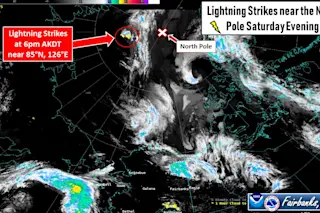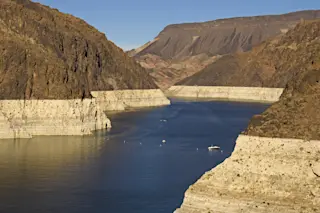We’re accustomed to lightning crackling within thunderstorms over relatively warm places like Florida — which happens to be the U.S. lightning champ.
But lightning near the North Pole? Well, that’s what happened on Saturday. And so now we get to add this to the list of extreme events that have befallen the Arctic this summer.
These include raging wildfires, dramatic losses of sea ice, and a heat-wave that caused about 55 billion tons of ice to melt from the Greenland Ice Sheet during a five day period in late July and early August.
The lightning within the Arctic thunderstorms was detected by a network of sensors a mere 300 miles from the North Pole between 4 p.m. and 6 p.m. Alaska Daylight Time, according to the National Weather Service in Fairbanks, AK.
The event was so unusual that it prompted a Tweet from the weather service saying it was one ...














